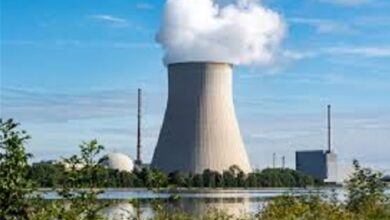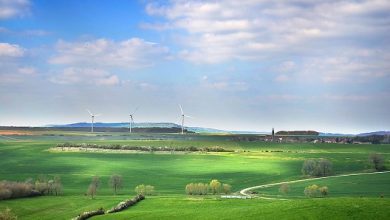Humanized landscape with characteristics and examples
A humanized landscape refers to spaces or terrains that have been transformed by the intervention of the hand of man. These changes are usually caused to meet your basic needs and improve your living conditions.
This transformation is a consequence of the evolution and modernization of societies over the years, which resulted in positive and negative situations for the environment.
Cities, with their constructions and roads, are examples of humanized landscapes. Source: pixabay.com
The territorial occupation developed by man includes the construction of roads and houses, the exploration of forests and mines, the practice of cattle and agriculture, the construction of cities and much more.
This transformation process caused worrying damage to the environment, which today has large worn and worn areas, high levels of pollution and unpredictable climate changes, as a result of the emission of toxic gases.
This influenced the natural development of flora and fauna, which were also negatively affected.
Characteristics of the humanized landscape
The concept of landscape refers to an extension or part of a territory that can be observed from a given point or location.
The French geographer Georges Bertrand defines it as “the result of the dynamic combination, therefore unstable, of physical, biological and anthropic elements, which react dialectically with each other and form a unique and inseparable set in continuous evolution”.
This idea includes man as a transforming element, but which in turn is also transformed by the environment. Thus, the main characteristic of the humanized landscape is the presence of a population, understood as the group of people who occupy a defined space.
As part of their development, the members of these communities carry out activities such as plowing the land, felling trees, diverting rivers and exploiting natural resources, which affect and modify the area in which they live.
different ratings
The term humanized landscape is often used in geography, biology, ecology, anthropology and sociology, among other sciences and fields of study. In addition, it is also used in the world of arts.
Many authors classify these landscapes taking into account the characteristics in which human intervention occurs.
For example, it can be classified as “spontaneous” or “planned”; into “rational” or “irrational” according to the use given to natural resources; or “sudden” or “gradual”, based on the period in which it occurs.
Examples of humanized landscape
There are many examples of changes men can make to a field to transform it into a humanized setting.
One of them is the case of agriculture, where the cultivation and tillage of the land modify the natural environment. Other similar cases are those of livestock and fishing, in which raising animals for consumption and use and extracting fish from the water alter the environment.
The same goes for felling trees, felling trees, and burning forests and jungles; as well as the development of road networks, with the construction of roads, streets and train tracks.
Also mining and industry, which use and extract natural resources and generate all kinds of waste, and tourism, whose exploration of places tends to leave its mark.
In turn, all existing cities in the world are another example of a humanized landscape.
The hand of man and technology
The development of technology has also increased human capacity to transform landscapes.
A specific case is that of the North Sea in Holland, where water was pumped in certain areas and it was discovered that there was fertile soil underneath. After that, dykes and dams were built and the land acquired from the sea is now used for agriculture and other purposes.
Likewise, in China, the flow of the Yangtze River has been permanently altered to irrigate certain areas, and today the world’s largest power plant exists.
Differences between naturalized and humanized landscape
Humanized landscapes differ from natural landscapes in that they have not been modified by man. Source: pixabay.com
Humanized landscapes differ from natural landscapes, as they are spaces and lands that have not been transformed by human action.
Among them are the North Pole and the South Pole, some mountains, forests, jungles, plains, valleys and deserts which, due to their climatic or physical characteristics, are uninhabitable or difficult to access, or do not have raw materials that can be explored.
Another difference between natural and humanized landscapes is that, in the first, changes occur gradually, due to wind or water erosion, the action of temperature, the evolution of vegetation, the modification of river courses. or the renewal of species.
On the contrary, when man intervenes in a field, transformations occur more quickly and, in many cases, are immediate.
Other examples of natural landscapes
Natural landscapes are also considered to be those places that, although they may be inhabited or contain human structures, have not been altered or modified by human hands.
This is the case of the Grand Canyon in Colorado, in the United States; Iguazu Falls in Argentina, Brazil and Paraguay; the Amazon River in Peru and Brazil; the fjord of Milford Sound in New Zealand; the Black Forest in Germany; Mount Vesuvius in Italy; the Uluru rock formation and the Great Barrier Reef in Australia; and the Galapagos Islands in Ecuador.
Other examples are parks or nature reserves and other protected areas to ensure their preservation and the development of their flora and fauna.




